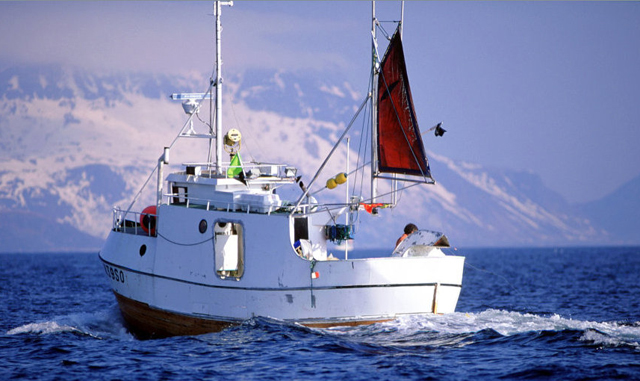Reducing the fishing fleet’s capacity has always been an objective. A number of schemes have been used to achieve this.
Coastal fishing fleet
Vessels in the coastal fishing feet are restricted to a maximum hold capacity of 500 m2. Vessels below 28 metres are arranged in five control groups according to the boat’s length.
A structural fee on the catch’s value used to previously be allocated to a structural fund, which could be used to pay a scrapping subsidy for vessels below 15 metres. This scheme was ended from 2010. When a vessel was scrapped, the approved quota shares were distributed within the control group to which the scrapped vessel belonged.
Since 2004 vessels in the coastal fleet with a length of between 15 and 27.99 metres, entitled to sail in access-restricted fisheries, have had access to structural quotas. This means that when this vessel is scrapped, the quotas in the access-restricted fishery can be transferred to one or more other vessels. The quota is reduced by 20% and distributed among all the vessels in the control group. A vessel cannot have a structural quota which is more than double the vessel’s own quota. The vessel surrendering the quota must be scrapped. The structural quota is valid for one year at a time.
From 2007 coastal fishing vessels 11-15 metres long also came under the structural quota scheme.
There has been a steady decline in the number of vessels in the coastal fishing fleet. This is true in particular of the smallest boats below 10 metres in length. The figure has fallen from 10,872 boats in 1995 to 3,419 in 2012. Vehicles between 15 and 20.99 metres in length have also seen a hefty reduction. The decrease in the number of vessels in the coastal fishing fleet was biggest between 2000 and 2004. However, we have seen an increase among the largest coastal vessels in recent years.
Vessels between 10 and 10.99 metres in length are the only group to have seen a steady rise in their number.
Marine fishing fleet
The marine fishing fleet is made up of larger vessels such as trawlers, ring net vessels and large longliners 28 metres or more in length. Fishing activities are arranged based on a limited number of licences.
The Regulation of 4 March 2005 also granted the marine fishing fleet access to a structural quota scheme to replace the previous unit quota schemes. In the same way as with the coastal fleet, the structural quota scheme permits quotas to be transferred for particular species of fish from one vessel to another. Or even from one vessel to several other vessels.
To be able to participate in this scheme, the vessels surrendering and receiving the quotas must have a licence or access to the relevant fishery. The vessel surrendering the quota must be scrapped and all additional licences given up. Structural quotas are allocated for one year at a time.
Just as with the coastal fishing fleet, there has been a fall in the number of vessels in the marine fishing fleet. The number of large fishing vessels 28 metres long or more has fallen from 372 in 1995 to 258 in 2012.
